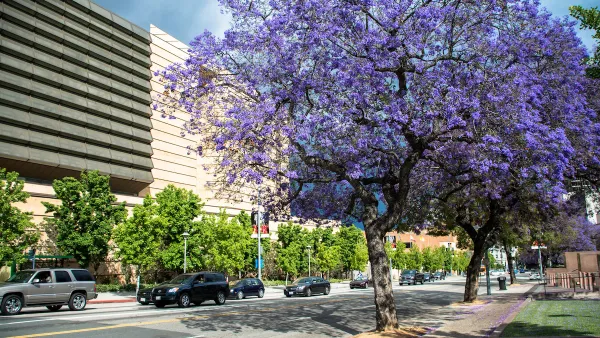Honolulu is expanding its urban tree canopy through community-driven park revitalization efforts, emphasizing the environmental, social, and cultural benefits of trees in creating a more resilient and equitable city.

Honolulu’s urban tree canopy plays a crucial role in community well-being, environmental resilience, and cultural connection, yet coverage remains uneven across the city. Measuring tree canopy helps identify gaps and prioritize areas for planting, particularly in underserved neighborhoods where extreme heat and limited access to green space are significant concerns. Urban trees provide essential benefits, such as cooling streets, filtering air, reducing stormwater runoff, and supporting local economies. Parks serve as critical spaces for expanding tree canopy and fostering social, economic, and environmental benefits, reinforcing their role in urban sustainability.
As Daniel Dinell and Lea Hong highlight in this article, two notable examples of community-driven greening efforts are ʻAʻala Park and Makalapa Neighborhood Park. ʻAʻala Park, historically a hub for political and cultural activities, faced social and environmental challenges but is now being revitalized through a collaborative process led by Trust for Public Land. Partnering with local stakeholders and the University of Hawaiʻi Community Design Center, the project envisions a park featuring native plantings, agroforestry, and a community garden. Similarly, at Makalapa Neighborhood Park, youth advocates successfully pushed for increased amenities and tree planting efforts, demonstrating the power of grassroots involvement in creating healthier urban spaces.
These efforts highlight a growing movement to restore and enhance Honolulu’s urban forests, emphasizing the importance of community participation in reclaiming and greening public spaces. The city’s Department of Parks and Recreation, alongside nonprofit groups and engaged residents, is making strides in accelerating tree planting and park improvements across Oʻahu. As Honolulu celebrates the Year of Our Community Forests, residents are encouraged to take part in tree-planting initiatives, volunteer programs, and advocacy efforts. By taking action — one tree, one park, one person at a time — Honolulu can reverse urban tree canopy loss and build a more resilient, greener future.
FULL STORY: Loving Trees, Loving Parks: An Rx For Our Urban Areas

National Parks Layoffs Will Cause Communities to Lose Billions
Thousands of essential park workers were laid off this week, just before the busy spring break season.

Retro-silient?: America’s First “Eco-burb,” The Woodlands Turns 50
A master-planned community north of Houston offers lessons on green infrastructure and resilient design, but falls short of its founder’s lofty affordability and walkability goals.

Delivering for America Plan Will Downgrade Mail Service in at Least 49.5 Percent of Zip Codes
Republican and Democrat lawmakers criticize the plan for its disproportionate negative impact on rural communities.

Test News Post 1
This is a summary

Test News Headline 46
Test for the image on the front page.

Balancing Bombs and Butterflies: How the National Guard Protects a Rare Species
The National Guard at Fort Indiantown Gap uses GIS technology and land management strategies to balance military training with conservation efforts, ensuring the survival of the rare eastern regal fritillary butterfly.
Urban Design for Planners 1: Software Tools
This six-course series explores essential urban design concepts using open source software and equips planners with the tools they need to participate fully in the urban design process.
Planning for Universal Design
Learn the tools for implementing Universal Design in planning regulations.
EMC Planning Group, Inc.
Planetizen
Planetizen
Mpact (formerly Rail~Volution)
Great Falls Development Authority, Inc.
HUDs Office of Policy Development and Research
NYU Wagner Graduate School of Public Service





























